One man’s journey from a Woolies manager to a resident of Sydney’s homeless tent city
FOR more than a decade, Wayne was a familiar face in Woolies. Now he’s one of the people commuters pass by in Sydney’s tent city.
LOOKING back, it seems like a different world to Wayne Grice.
The days when he was a fresh produce manager at Woolworths, stacking the shelves, dishing out dinner ideas, helping customers with what fruit and veg were in season.
Now he’s someone who NSW Premier Gladys Berejiklian is reportedly “completely uncomfortable” with.
Mr Grice is one of up to 45 people a night sleeping in a homeless tent city, which has sprung up on Sydney’s iconic Martin Place.
When news.com.au met him a few days ago he was sitting in front of his modest tent, just steps from the NSW Parliament.

Well-heeled workers, employed at some of Australia’s largest companies, darted past him, zigzagging between the canvas homes.
“It’s not until you lose it all you realise what you’ve lost,” he said.
“My ideal situation would be back with my wife and kids and to be a happy family but that’s not going to happen.”
At least 35 tents stretch from one side of the street, in front of the Reserve Bank’s headquarters, to the other. It’s estimated two more are put up every day.
Dismantled by the authorities once already, the tents have become the centre of a slanging match between the NSW Government and the City of Sydney council.
On Tuesday, Premier Berejiklian said housing staff has visited the camp 41 times to offer alternatives to sleeping rough, but some had no intention of moving.
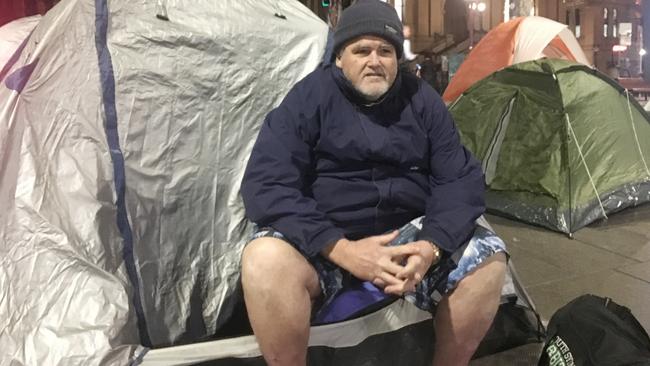
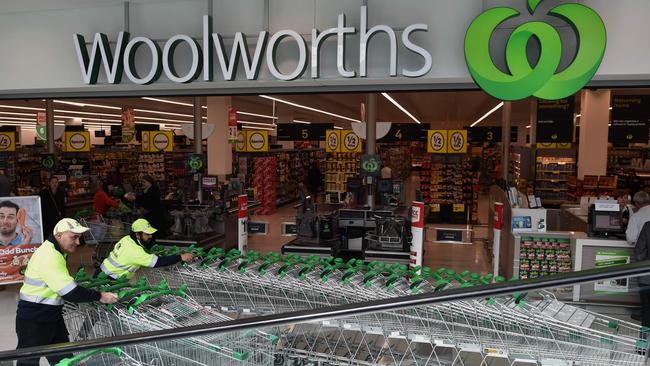
“I call on [Sydney Lord Mayor] Clover Moore to get rid of that tent city. It should not be there.”
But Ms Moore is having none of it. She says rehousing the homeless should be the priority and that’s the State Government’s job
“It’s not illegal for people to be homeless — for some people it’s an inevitable consequence of the housing affordability crisis in Sydney.”
In a tweet, she said only the police had the power to move people on. The NSW Police told news.com.au they would only do so if there were “reasonable grounds that a group is obstructing traffic/people, intimidating, harassing and/or involved in other illegal activity.”
Mr Grice, who has two teenage daughters, shrugs at the political blame game. For him, homelessness is all too real.
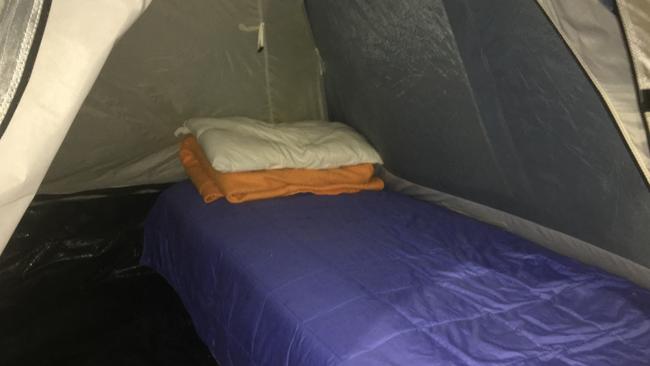
His tent is small but spotlessly clean. A mattress is jacked up on milk crates to take it off the cold pavement. A sleeping bag lies across the bed. The only light comes from a street lamp.
Like many other people sleeping out in Martin Place, his journey to the streets included a relationship breakdown and a career falling apart.
“I was in retail management including 13 years at Woolworths,” he says.
“Mainly fruit and veg, I started when I was 15 in the markets then Woolies where I did a bit of warehousing, buying and management in stores.
“I’ve tried to get back in there but they try not to put too many staff on these days”.
He made no suggestion his time at the retailer played any role in his current situation. Other people News.com.au spoke to said they were former sales reps and project managers, all now living on the streets.
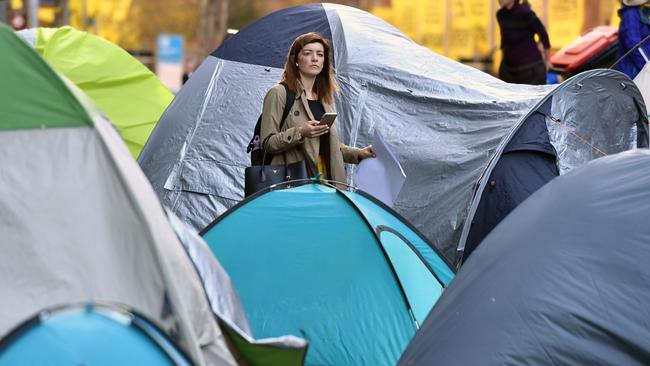
He became homeless a couple of months ago.
“I was living on the trains, going up to Lithgow from Sydney at night,” Mr Grice says.
“It’s three hours each way so you can get some sleep but when you get up there you have to stand on the cold platform for an hour and a half in the middle of the night waiting for the first train back.
“You get used to it.”
To one side of the tents is a well-stocked kitchen. Cooked breakfasts are dished out in the morning and a warming dinner in the evening — all dished up by volunteers.
The buzzing kitchen acts as a nucleus for the camp, creating the sense of community many of those living with homelessness crave.
“A lot of people in accommodation still come back for a feed. It’s more for companionship than having a full stomach. A lot of people can’t cope being on their own,” Mr Grice says.
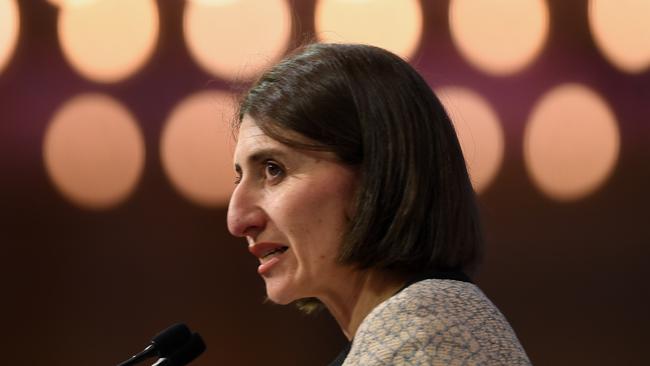
He has been placed in temporary crisis accommodation before but it hasn’t always worked out, leading him back to Martin Place.
“In boarding houses you can have more dramas than on the street. People are all smoking dope and (are) as pissed as farts.
“When the money is guaranteed [to boarding house owners] from the agencies they turn a blind eye to it all,” he says.
Not that sleeping in a tent on a busy thoroughfare is exactly desirable. There’s been the odd fracas, he says, although the camp’s organisers “jump on it”.
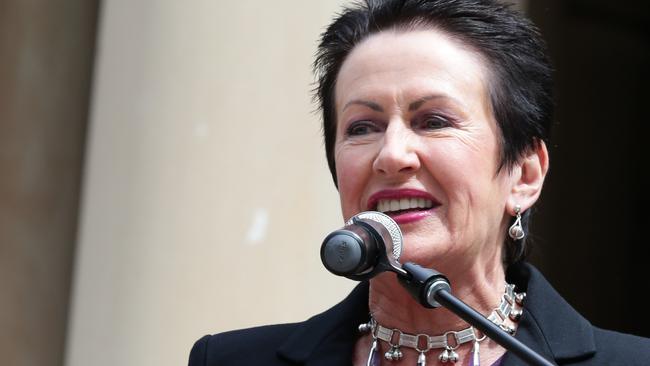
Entry to the tents is strictly controlled they say — trouble isn’t tolerated, neither are drugs or alcohol. They want to give the authorities as few reasons as possible to move them on.
“You’ve got security, it’s well lit, people are here all night, and everyone helps each other,” says Mr Grice.
He wants to get back on his feet; get a job. But he can see how the camaraderie and relative comfort and safety of Martin Place could discourage some from seeking more permanent options.
“It can become a trap. You have food, coffee, it’s a good lifestyle for some people.”
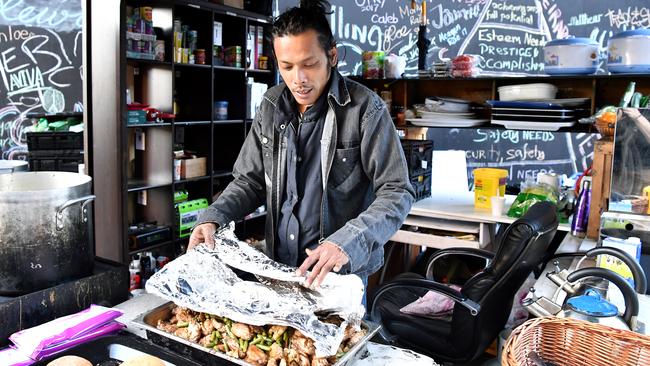
Mr Grice is packing up his few belongings and leaving his tent ready for the next resident. For tonight, Family and Community Services has found him a room in a motel.
“I’d love my own place but no one can afford that in Sydney.”
He still keeps in touch with his daughters and visits them on weekends. One works in a bakery and at the end of her shift, if there are loaves going spare, she gives him a couple for the camp.
Tomorrow morning, he will head from the motel to the housing office to see if there is somewhere more permanent to bed down.
“But if I’m not happy where they put me I’ll come back,” he says.
“I’d prefer to be here than on the trains.
“It’s only a tent, but it’s warm.”
News.com.au sent Mr Grice’s details to Woolworths. The chain said they had no specific programs to help those experiencing homelessness into jobs.
A spokeswoman said the company was “committed to ensuring our teams reflect the local communities we serve” and the supermarket focused its workplace participation initiatives on indigenous workers, people with a disability and older workers.




